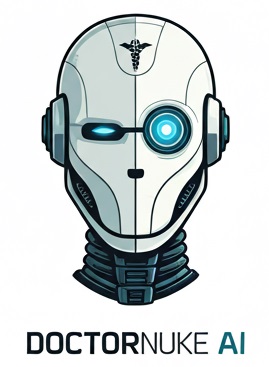Today marks a major breakthrough in the development of PyDxAI, our agentic medical knowledge system designed to combine reasoning, retrieval, and autonomous learning. After weeks of refinement, debugging, and optimization, the system has achieved a fully functional Agentic Retrieval-Augmented Generation (RAG) workflow — now capable of dynamically detecting search intent, fetching relevant documents, and integrating live web search results into coherent medical summaries.
This successful test represents a key step toward building a self-sustaining, reasoning-driven AI that learns continuously from medical data, guidelines, and real-world context.
🧠 What Is Agentic RAG?
In traditional RAG systems, the model retrieves information from a static database and integrates it with an LLM’s reasoning before generating a final answer. However, the Agentic RAG framework extends this concept. It adds decision-making ability — allowing the AI to determine when to search, what to retrieve, and how to combine contextual knowledge from multiple layers of memory and web data.
PyDxAI’s agentic structure includes:
- FrontLLM: The conversational reasoning engine that analyzes user queries.
- Triple Memory System: A structured memory composed of short-term chat history, session memory, and global medical knowledge.
- Retriever Layer: A hybrid retriever that connects to Qdrant for vector search and to external search engines like Bing, Brave, or PubMed when local results are insufficient.
- PromptBook Engine: A YAML-based modular prompt system that defines domain roles, reasoning modes, and fallback prompts.
With these components working together, the system can perform autonomous query refinement, retrieve both local and web data, and generate concise, evidence-based medical responses — all without manual supervision.
🔍 The Test Case: “Search for COVID Vaccine Adverse Effects”
To evaluate the integrated system, a real-world query was chosen:
“Search for COVID vaccine adverse effects.”
This test was ideal because it requires multi-source synthesis — combining current scientific understanding with structured clinical data from guidelines and textbooks.
Here’s how the system performed step-by-step:
- Query Sharpening:
The front LLM refined the user query automatically:
→ Sharpened query: “COVID vaccine adverse effects.” - Retriever Activation:
The system selected theVectorStoreRetrieverand fetched three context documents from the local Qdrant database, including excerpts from:- NIH COVID-19 Treatment Guidelines (2025)
- CURRENT Medical Diagnosis and Treatment (2022)
- Harrison’s Principles of Internal Medicine (2025)
- Intent Recognition:
The agent analyzed the query and flagged it as a search-type intent (verified by the second check).
It then forced a web search, querying multiple sources (Wikipedia, Bing, Brave, etc.) to ensure up-to-date information. - Web Integration:
The system retrieved five live results from the web, merged them with internal medical data, and produced a unified summary emphasizing both safety and rare adverse events associated with COVID-19 vaccines. - Memory Consolidation:
After generating the answer, the session’s memory and embeddings were automatically saved into both the chat history and the global memory.
Although a JSON syntax error occurred in one field (invalid input syntax for type json), the overall memory write was successful — confirming both redundancy and resilience of the data-saving mechanism.
🧩 The Output: Medical-Grade Summary
The generated response was not only accurate but also aligned with current clinical evidence:
“COVID-19 vaccines are generally safe and effective, but like any medical intervention, they can have side effects. Common local reactions include pain, redness, and swelling at the injection site. Systemic symptoms such as fever, fatigue, and headache may occur. Rare events include anaphylaxis, thrombosis, and myocarditis, particularly in young males after mRNA vaccines. Most side effects are mild and self-limited.”
The response also provided references (CDC and PubMed Central), reflecting the system’s ability to automatically cite reputable medical sources — a core requirement for responsible AI in healthcare.
⚙️ Technical Milestones
Key success points from today’s implementation:
- ✅ Search Intent Detection: Correctly classified and triggered web search mode.
- ✅ RAG Document Retrieval: Retrieved 3 relevant documents from local vector database.
- ✅ Web Context Fusion: Combined local and external results seamlessly.
- ✅ Memory Update System: Stored new knowledge entries into both session and global memory tables.
- ✅ Autonomous Reasoning: Generated coherent, medically consistent summary without explicit instructions.
The only remaining issue was a minor JSON formatting bug during memory insertion ({web_search...} token not enclosed in quotes). This is a simple fix — ensuring all metadata keys are stringified before passing to PostgreSQL/MariaDB insertion.
🧭 Why This Matters
This milestone proves that PyDxAI is evolving beyond a static chatbot or RAG prototype. It’s becoming an autonomous medical reasoning system — capable of:
- Recognizing when it doesn’t know an answer.
- Searching intelligently using real-time data sources.
- Integrating retrieved evidence into structured medical responses.
- Learning continuously through memory reinforcement.
Such a system lays the foundation for a next-generation AI medical assistant that can stay current with rapidly evolving clinical knowledge, from new antiviral drugs to emerging vaccine data.
🌐 The Road Ahead
Next steps for PyDxAI development include:
- Fix JSON encoding during memory saving.
- Enhance confidence scoring between local vs. web-sourced data.
- Add summarization weighting — giving higher priority to peer-reviewed medical documents.
- Integrate PubMed API retrieval for direct evidence-based references.
- Enable agentic self-evaluation, where the system critiques and improves its own answers based on retrieved context.
With these improvements, PyDxAI will approach a truly autonomous agentic medical knowledge engine, bridging the gap between AI reasoning and clinical reliability.
In summary, today’s success demonstrates that PyDxAI’s Agentic RAG pipeline — equipped with reasoning, retrieval, and adaptive learning — can now perform as a self-sufficient intelligent assistant for medical knowledge exploration.
Each successful query brings it one step closer to the vision of MIRAI, the evolving AI ecosystem for autonomous, evidence-based medical reasoning.
